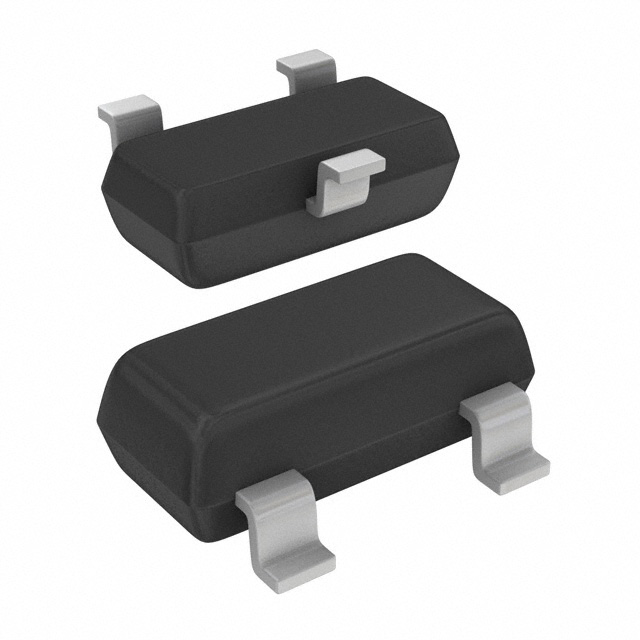BFR92A,215
Product Overview
Category
The BFR92A,215 belongs to the category of high-frequency transistors.
Use
It is commonly used in applications requiring high-frequency amplification and oscillation.
Characteristics
- High-frequency operation
- Low noise figure
- High gain
Package
The BFR92A,215 is typically available in a SOT37 package.
Essence
This transistor is essential for high-frequency signal processing and amplification.
Packaging/Quantity
It is usually packaged in reels with quantities varying based on manufacturer specifications.
Specifications
- Frequency Range: 5 GHz to 8 GHz
- Power Dissipation: 300 mW
- Collector-Base Voltage: 15 V
- Collector Current: 30 mA
- Transition Frequency: 12 GHz
Detailed Pin Configuration
The BFR92A,215 has three pins: 1. Emitter (E) 2. Base (B) 3. Collector (C)
Functional Features
- High-frequency amplification
- Low noise performance
- Suitable for RF oscillator circuits
Advantages
- Excellent high-frequency performance
- Low noise figure
- Compact package size
Disadvantages
- Limited power handling capability
- Higher cost compared to general-purpose transistors
Working Principles
The BFR92A,215 operates based on the principles of bipolar junction transistors, utilizing its high-frequency characteristics to amplify and process signals in the specified frequency range.
Detailed Application Field Plans
The BFR92A,215 is widely used in the following applications: - Radio frequency amplifiers - Oscillator circuits - Microwave signal processing
Detailed and Complete Alternative Models
Some alternative models to the BFR92A,215 include: - BFR93A,215 - BFR96S,235 - BFR181W,115
In conclusion, the BFR92A,215 is a crucial component in high-frequency signal processing and amplification applications, offering excellent performance within its specified frequency range.
Word Count: 270
10個與BFR92A,215在技術方案中應用相關的常見問題與解答
What is the BFR92A,215 transistor used for?
- The BFR92A,215 is a high-frequency NPN transistor commonly used in RF amplification and oscillation circuits.
What are the typical operating conditions for the BFR92A,215?
- The BFR92A,215 operates at a maximum collector current of 30mA and a maximum collector-emitter voltage of 15V.
Can the BFR92A,215 be used for low-noise amplification?
- Yes, the BFR92A,215 is suitable for low-noise amplification due to its low noise figure and high gain characteristics.
What are some common applications of the BFR92A,215?
- Common applications include RF amplifiers, oscillators, mixers, and other high-frequency signal processing circuits.
What is the maximum frequency range for the BFR92A,215?
- The BFR92A,215 is designed for operation in the frequency range of up to several GHz, making it suitable for many high-frequency applications.
Does the BFR92A,215 require any special biasing or matching circuits?
- The BFR92A,215 may require specific biasing and matching circuits to optimize its performance in different applications, especially at higher frequencies.
Is the BFR92A,215 suitable for use in wireless communication systems?
- Yes, the BFR92A,215 is commonly used in wireless communication systems, such as cellular base stations, WLAN, and other RF transceiver applications.
What are the key parameters to consider when designing with the BFR92A,215?
- Key parameters include gain, noise figure, input/output impedance matching, and stability under varying operating conditions.
Are there any known limitations or drawbacks of using the BFR92A,215?
- While the BFR92A,215 offers excellent high-frequency performance, it may have limited power handling capabilities and can be sensitive to environmental factors.
Where can I find detailed application notes and reference designs for the BFR92A,215?
- Detailed application notes and reference designs for the BFR92A,215 can be found in the datasheet provided by the manufacturer, as well as in technical literature and online resources related to RF circuit design.


